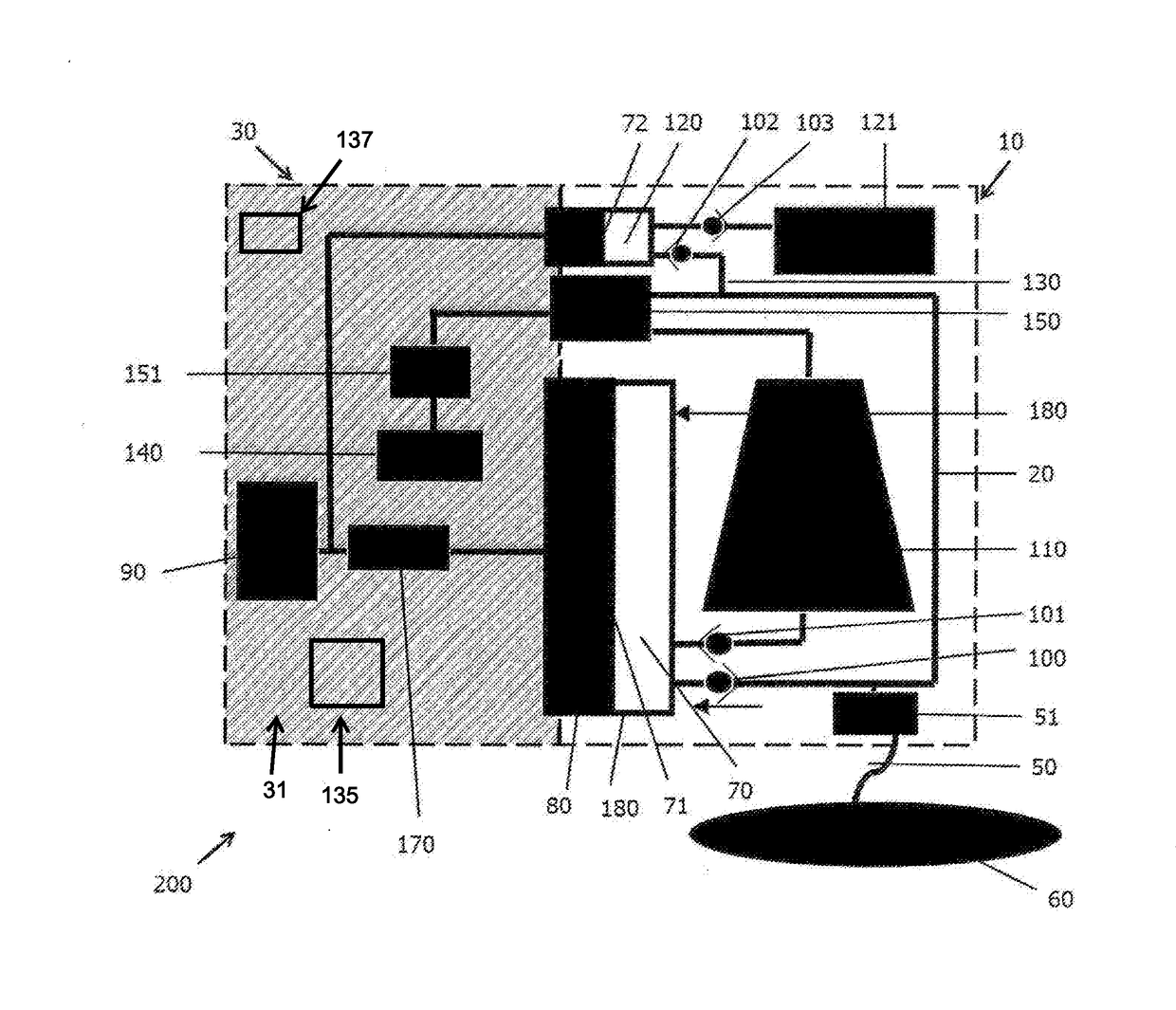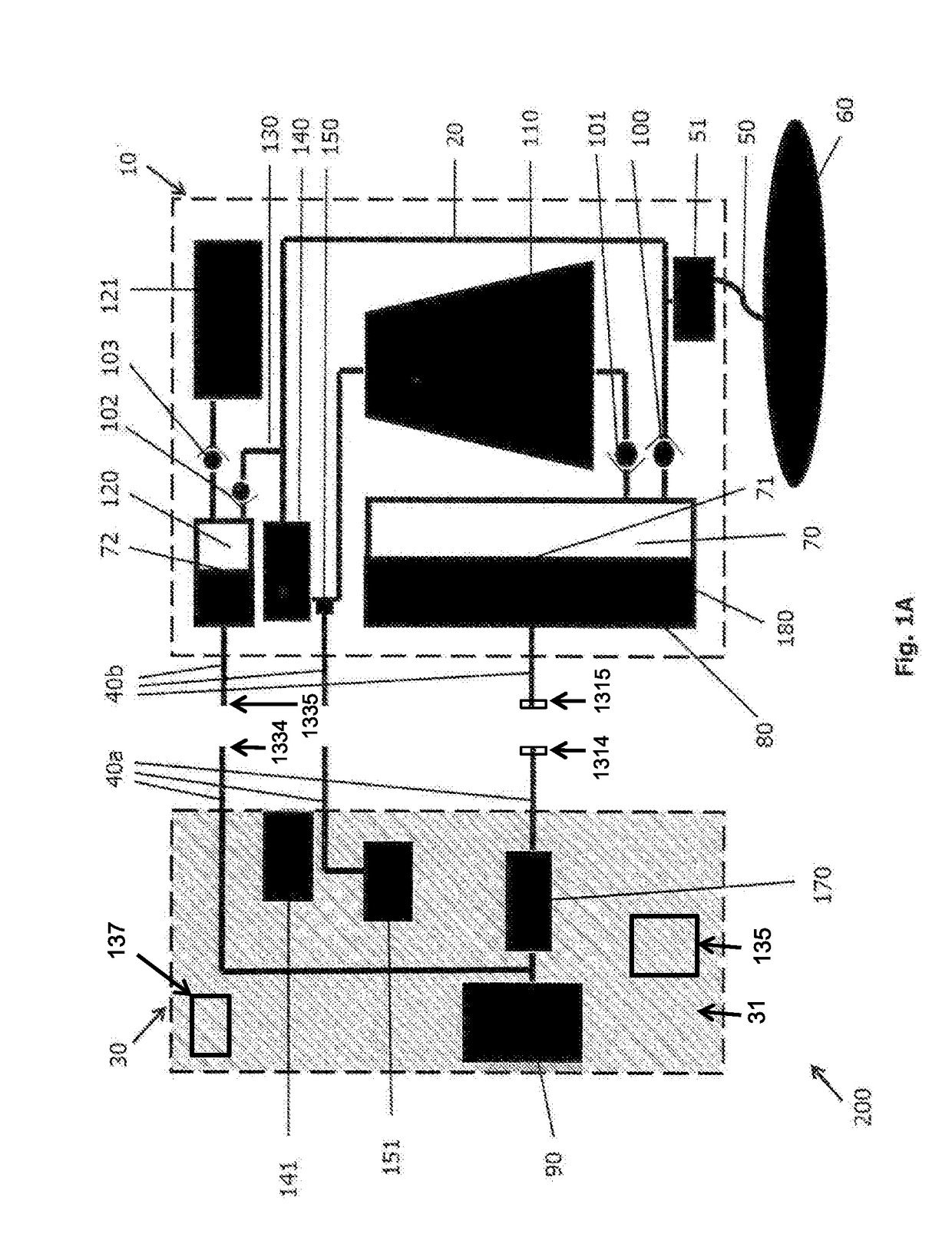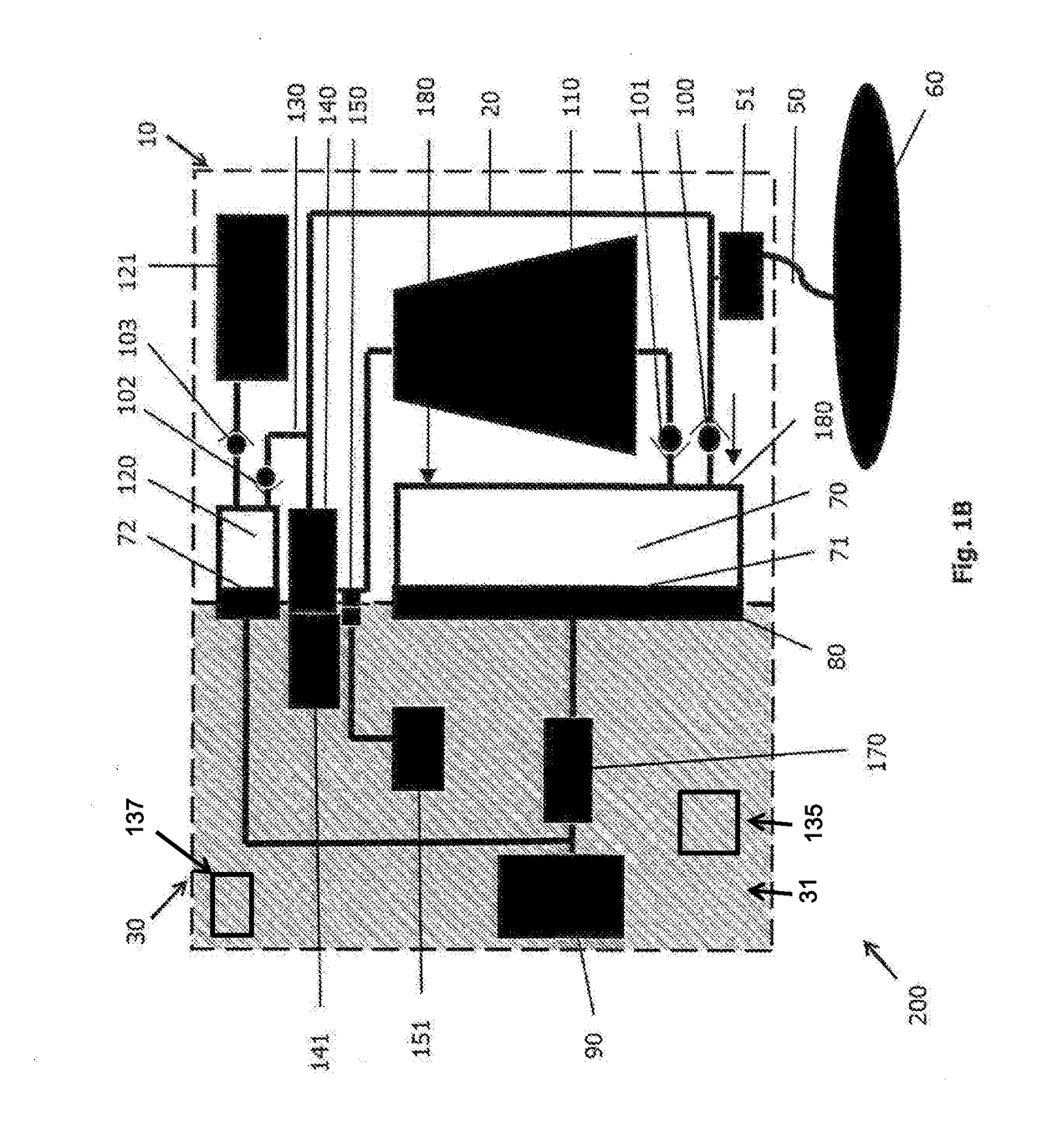Dialysis device and method of dialysis
a dialysis device and dialysis method technology, applied in the field of dialysis devices, can solve the problems of affecting the sterility of the device, and the body losing the ability to adequately remove toxic waste in the blood, so as to improve the sterility of the disposable device, reduce the chance of patient infection, and maintain the effect of the device sterility
- Summary
- Abstract
- Description
- Claims
- Application Information
AI Technical Summary
Benefits of technology
Problems solved by technology
Method used
Image
Examples
Embodiment Construction
[0056]Exemplary, non-limiting embodiments of a flow system of dialysis device will now be disclosed.
[0057]The flow system of a dialysis device comprises: a disposable housing having a flow path along which dialysate received from a patient is subjected to contaminant removal;
[0058]a controller for controlling the operation of said disposable housing; and
[0059]an interface capable of connecting the controller and the disposable housing to enable contaminant removal from the dialysate;
[0060]wherein the flow path is fluidly sealed from the controller and interface.
[0061]In one embodiment, the disposable housing further comprises a sorbent zone in fluid communication with the dialysate flow path for removing contaminants in the dialysate.
[0062]In one embodiment, the disposable housing further comprises a storage chamber in fluid communication with the dialysate flow path for storing the dialysate therein.
[0063]In one embodiment, the disposable housing further comprises a fluid displacem...
PUM
 Login to View More
Login to View More Abstract
Description
Claims
Application Information
 Login to View More
Login to View More - R&D
- Intellectual Property
- Life Sciences
- Materials
- Tech Scout
- Unparalleled Data Quality
- Higher Quality Content
- 60% Fewer Hallucinations
Browse by: Latest US Patents, China's latest patents, Technical Efficacy Thesaurus, Application Domain, Technology Topic, Popular Technical Reports.
© 2025 PatSnap. All rights reserved.Legal|Privacy policy|Modern Slavery Act Transparency Statement|Sitemap|About US| Contact US: help@patsnap.com



